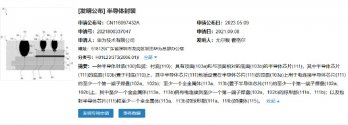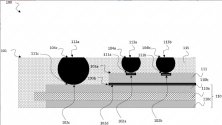antiterror13
Brigadier
CGTN put out a short segment on CETC:
Wondering whether all Chinese military chips produce by CETC ?
CGTN put out a short segment on CETC:
The Nexchip numbers are in RMB and it’s ASP for 12” whereas HH’s is 8” equivalent ASP.Nexchip's price/wafer is much higher than Huahong,don't know why is that?
View attachment 112506
View attachment 112507
Even more on this
This really does seems like a very interesting approach. They first tried this computation in SRAM approach last year on a 22nm process. Now, they are able to generate even more powerful & efficient chip with 12nm process
so there is a well known issue where 60% of time is spent on data transfer and over 90% of power is used in data transfer. So my putting the computation unit inside SRAM (it's not clear how they are doing this), but they claim to greatly reduce # of calls into memory unit and computation unit, making it a lot more efficient. Didn't mission hybrid bonding or anything like this
It's known that computation speed is advancing faster than memory bandwidth. By placing them close together, this just decreases the stale time of the computation unit. Alibaba Damo academy put memory/computation in 1 unit as a top 10 trend in 2023.
Looks like this has been supported by 55 possible customers. From what I can see, this is not limited to autonomous driving. If they scale this up and make it on 7nm process, this could be a very powerful GPGPU
It seems like this is a very new concept, so there is a lot of improvement ahead still


I think what he says here is entirely expected.华为最新公布了一个新专利,半导体封装技术
华为消息正在稳步推进属于自己的半导体体系,从软件到硬件都在紧锣密布的进行中,关键技术和创新技术不断,绕开专利壁垒的也有,所以华为确实很努力在寻求突破美国带来的半导体封锁。
It's well accepted.IIRC, @FairAndUnbiased mentioned that as you get to more advanced nodes with higher densities, there is also higher % of dark transistors that can't be accessed. Any link on that, btw?
I could be entirely wrong here, but it seems like once you get to something between 5 and 7nm process, shrinking further & packing more transistors won't get the scale of improvements compared to 28nm to 14nm
So improvements to CPU/GPU performance probably reside in more improved designs like what we see with this Houmo chip and more improved 3D packaging to get memory & logic die closer to each other and to improve the bond between them
This is the description of the patent for more context:View attachment 112544
View attachment 112545
btw, new patent from Huawei on advanced packaging. I actually don't understand this at all, so I will let you guys figure it out
From Huawei whisper
I think what he says here is entirely expected.
Being restricted to 7nm for a couple of years is not ideal, but with improved packaging and software. At least for AI, HPC and EVs, Huawei imo should be competitive here
Could I ask what you meant by “started out with substantial investment from Powerchip”? Powerchip still has big share of Nexchip after the IPO, no?That is likely the case for most other Chinese semiconductor companies as well. Not just Nexchip.
Nexchip started out with substantial investment from Powerchip in Taiwan. So of course there was technological transfer from Taiwan as well.
Hopefully they will continue to switch to Chinese wafer and photoresist manufacturers. They already buy at least some wafers and all the gases in China.
Powerchip is known as a “Nikon” fab with Nikon as the tool of record for dry scanners. No surprise Nexchip took after Powerchip’s tool of record.
